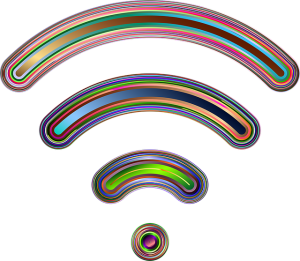Are You Aware that Free Wi-Fi is Not Safe?
 They say there’s no such thing as a truly free lunch – but maybe there’s no such thing as truly free Wi-Fi either.
They say there’s no such thing as a truly free lunch – but maybe there’s no such thing as truly free Wi-Fi either.
Sure, it may not cost you anything, but in many cases, free Wi-Fi is not safe. Public internet access is available everywhere from stores to cafes to airports, but using those super-convenient, free networks can pose major security risks.
“Public Wi-Fi is inherently insecure. Anyone using it ought to do so with the premise that everything you do is visible to a third-party stranger with access to that hot spot.” This was the warning from cybercrime expert and New Jersey prosecutor Kevin Clark during his interview with the Asbury Park Press. “The chances of you being hacked far exceeds the chances of your home being burglarized. This is big business.”
Some networks might be reasonably safe – like those that require a password from a store or business. But completely free Wi-Fi that doesn’t require a password is probably not a good idea. For one, hackers can create rogue access points that look like real Wi-Fi networks – but instead, they’re websites designed to steal your personal information. If your computer asks you to re-enter a user name and password and if the browser (Chrome or Firefox) warns you the security certificate is invalid, you should definitely be wary. If that happens, the best course of action is to shut down your computer ASAP.
To be clear, we are only discussing a situation when you access free Wi-Fi. During the times when you are home or at work and your browser warns you a security certificate is invalid, this only means the company’s SSL has expired, not that the company is risky.
If you’re determined to use Wi-Fi anywhere and everywhere, there are some ways to be safe about your internet use. Typically, according to Norton , using networks that require a login means there’s some level of security. Also, when you’re using any unfamiliar network – even if it requires a password – make sure you stick mostly to https sites instead of http sites. The former typically means the traffic to and from the site is encrypted, which helps deter hackers a little.
Generally, paid Wi-Fi is safer than free alternatives. Sure, free is great, but when it comes to internet access, free Wi-Fi is not safe. While it’s entirely possible you could use free networks with no negative consequences, it’s also always possible that a hacker or snoop could lift your data and wreak havoc on your personal life and finances. Avoiding that risk is certainly worth the cost of paid access.
But even if you’re not interested in shelling out money to every Wi-Fi network you encounter, there are ways to access the internet in public without resorting to unprotected free Wi-Fi. For instance, a lot of smartphones have the ability to turn on a hotspot, which means you can connect to the internet through your phone. It uses up data, but it’s safer than connecting your laptop or tablet through a Wi-Fi network you don’t know.
If you don’t want to blow your cellular data every month, you can buy a secure hotspot. A number of companies offer portable hotspots you can easily tote around with you and use on the go without incurring the security risks associated with public networks. They come at a cost – but they might offer long-term savings when compared to the cost and hassle of cleaning up identity fraud.
Another option that’s a good boost for your security when using free Wi-Fi is a VPN service. A VPN – or virtual private network – is a method of encrypting info going in and out of your device. It can help protect your computer physically. There are a number of VPNs out there, but this one is one of the best rated.
Some additional security tips:
- “Travelers should be conscious of hackers who will attempt to physically steal laptops, tablets and cell phones from luggage, hotel rooms or coffee shops when they are left unattended,” cyber strategist Orlando Scott-Cowley told PC World. “Also, users should never insert CDs, disks or thumb drives they have found into their devices. Hackers often drop these items at public places specifically to get unsuspecting individuals to plug them into their devices in order to infect them.”This is a strategy that Mr. Robot fans might be familiar with, as it pops up in an episode when one character is duped into infecting his own device with an infected thumb drive left outside.
- Turn on your firewall if it wasn’t already turned on. Go into your security settings in Windows under Control Panel > System and Security > Windows Firewall.
- And finally, turn off sharing for files, printers, or any remote login access from other computers on your network.
To do so go to Control Panel, then browse to Network and Internet > Network and Sharing Center, then click Choose Change Advanced Sharing Settings. Once here, you should definitely turn off file and printer sharing, and you may as well turn off network discovery and Public folder sharing.
When you are in a hurry, it may seem tempting to just log onto the free-wifi for a quick task, but you have to remember, hackers work at the speed of light. It could take them only a minute to access your devices. Bottom line – Free Wi-Fi is Not Safe even if it’s only for a few minutes.
